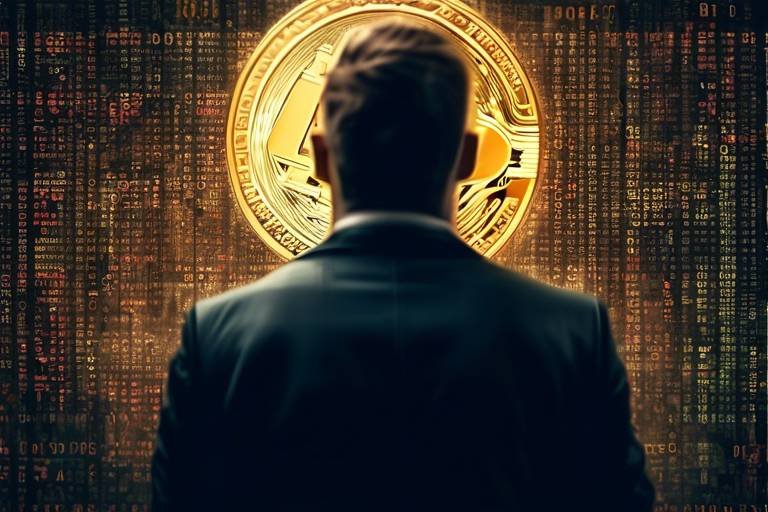Market Predictions - The Future of Blockchain Governance
The world of blockchain governance is rapidly evolving, and as we peer into the future, we can see a landscape filled with both opportunities and challenges. Imagine a world where decisions are made not by a select few but by the collective voice of the community—this is the essence of blockchain governance. It’s a paradigm shift that is not just reshaping industries but is also influencing how regulatory frameworks are constructed across the globe. As we delve deeper, we will explore the trends that are currently shaping this space, the impact of regulations, and the technological innovations that are paving the way for a more decentralized future.
One of the most striking trends in blockchain governance is the move towards **decentralized decision-making**. This shift is akin to turning the traditional corporate hierarchy on its head, where power is distributed among stakeholders rather than concentrated at the top. This transformation is not just a theoretical concept; it is being actively implemented in various sectors, from finance to supply chain management. The implications are profound, as organizations begin to realize the potential of engaging their communities in governance processes. Think of it as a community garden where everyone contributes to the growth and health of the project, rather than a single gardener dictating how things should be done.
However, with great power comes great responsibility. The decentralization of governance introduces a series of **challenges** that must be navigated carefully. For instance, how do we ensure that all voices are heard without falling into the trap of decision paralysis? Moreover, as we embrace these new governance models, the **role of regulation** becomes increasingly significant. Regulatory frameworks are being developed to provide a safety net, ensuring that while innovation thrives, consumer protection and financial stability are not compromised. It’s a delicate balancing act that requires collaboration between regulators, businesses, and the community.
As we look ahead, it’s essential to consider the **technological innovations** that will shape the future of blockchain governance. Emerging technologies such as **smart contracts** and **Decentralized Autonomous Organizations (DAOs)** are revolutionizing how we think about governance. Smart contracts act like self-executing agreements, removing the need for intermediaries and enhancing trust among stakeholders. Imagine a world where contracts are automatically enforced without the need for a third party—this is the power of smart contracts.
DAOs, on the other hand, are empowering communities to govern themselves. They allow for collective decision-making and resource allocation without centralized control, creating a sense of ownership and accountability among participants. This is not just a trend; it’s a movement towards a more democratic approach to governance that could redefine how organizations operate.
In conclusion, the future of blockchain governance is not just about technology; it’s about people. As we embrace these changes, we must remain vigilant about the challenges that lie ahead, including scalability and security. Ensuring that these systems are robust and secure is critical, as vulnerabilities can undermine the very trust that blockchain governance seeks to build. As we navigate this exciting landscape, one thing is clear: the journey towards a more decentralized and inclusive governance model has just begun.
- What is blockchain governance?
Blockchain governance refers to the mechanisms and processes that allow stakeholders to make decisions regarding the operation and direction of a blockchain network.
- How does decentralization impact governance?
Decentralization empowers stakeholders by distributing decision-making power, which can lead to more democratic and transparent governance models.
- What role do regulations play in blockchain governance?
Regulations provide a framework for compliance, ensuring that while innovation occurs, consumer protection and financial stability are maintained.
- What are smart contracts?
Smart contracts are self-executing contracts with the terms of the agreement directly written into code, which automatically enforce and execute the contract when conditions are met.
- What are DAOs?
Decentralized Autonomous Organizations are organizations governed by smart contracts, allowing for collective decision-making without centralized authority.
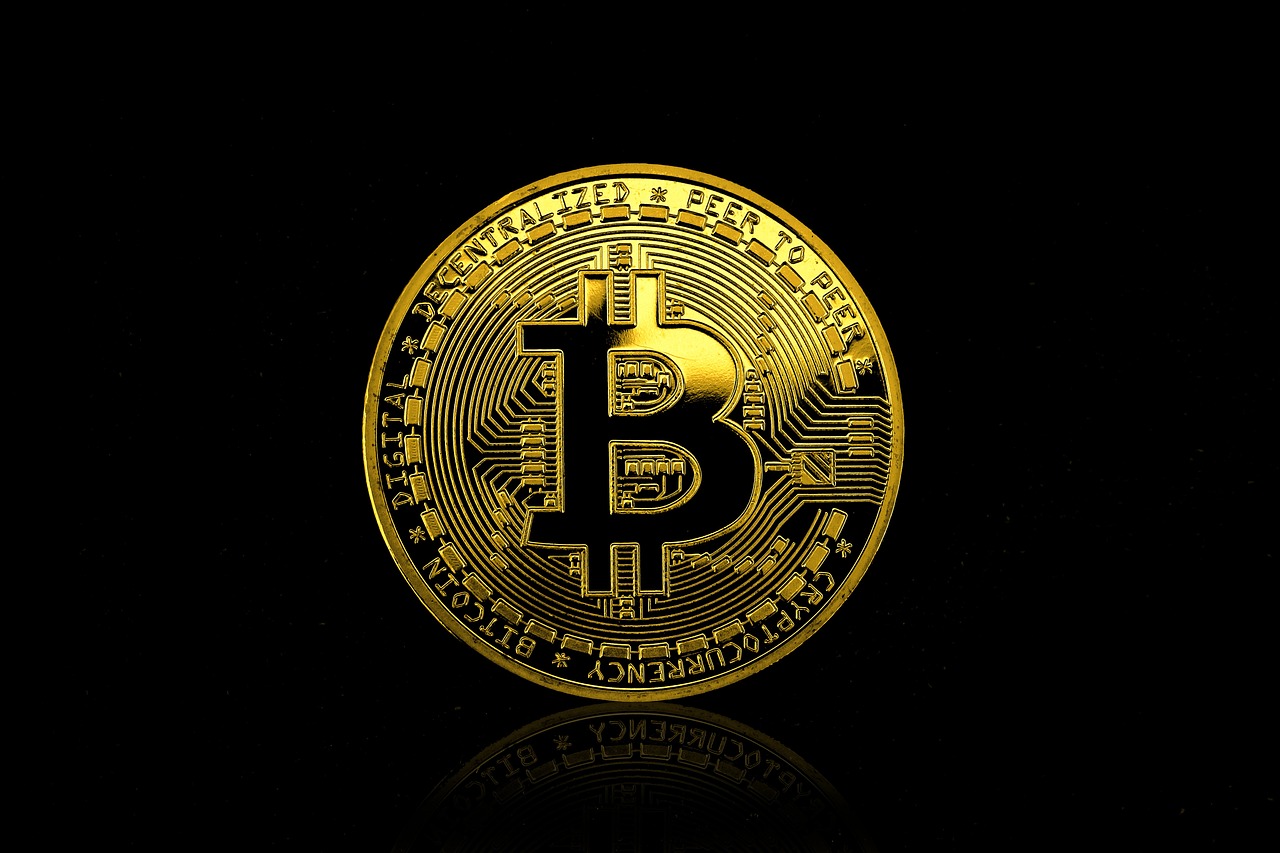
Current Trends in Blockchain Governance
As we dive into the fascinating world of blockchain governance, it's essential to recognize that this landscape is constantly evolving. The **decentralization** of decision-making is not just a buzzword; it's a transformative force reshaping industries and influencing regulatory frameworks globally. Imagine a world where power is distributed among all stakeholders rather than concentrated in the hands of a few. This shift is not only **revolutionizing** how organizations operate but also how they interact with their customers and regulators.
One of the most significant trends is the rise of **Decentralized Autonomous Organizations (DAOs)**. These entities empower communities to govern themselves without centralized control, allowing for transparent and democratic decision-making. For instance, imagine a community of artists pooling their resources to fund projects; they can collectively vote on which projects to support, ensuring that everyone's voice is heard. This trend is indicative of a broader movement toward participatory governance, where stakeholders have a direct say in operations.
Moreover, the integration of **smart contracts** is another trend making waves in blockchain governance. These self-executing contracts with the terms of the agreement directly written into code eliminate the need for intermediaries. Think about it: instead of relying on a lawyer to enforce a contract, the code itself ensures compliance. This not only streamlines processes but also enhances trust among parties involved. Companies are increasingly adopting smart contracts for various applications, from supply chain management to real estate transactions, significantly reducing the potential for disputes.
Another noteworthy trend is the growing interest from **governments and regulatory bodies** in blockchain technology. As they recognize the potential benefits of blockchain, many are exploring how to incorporate it into their existing frameworks. This interest is leading to a more structured dialogue between the tech community and regulators, fostering an environment where innovation can thrive while still addressing concerns about security and compliance. For example, countries like Switzerland and Singapore have established regulatory sandboxes, allowing blockchain startups to test their innovations in a controlled environment.
However, with all these exciting trends come challenges. The balance between **decentralization** and regulatory compliance is a tightrope walk that many organizations must navigate. While decentralization offers greater autonomy and flexibility, it can also lead to complications when it comes to adhering to legal standards. As the landscape evolves, stakeholders must remain vigilant and adaptable to these changes, ensuring they can leverage the benefits of blockchain governance while minimizing risks.
In summary, the current trends in blockchain governance are a blend of **innovation** and **adaptation**. From DAOs and smart contracts to increased regulatory engagement, the landscape is rich with opportunities and challenges. As we continue to explore these developments, it's crucial for all stakeholders—be it businesses, regulators, or individuals—to stay informed and engaged in this rapidly changing environment.
- What is blockchain governance?
Blockchain governance refers to the systems and processes that define how decisions are made within a blockchain network, including rules for protocol changes and stakeholder engagement. - How do DAOs work?
DAOs operate on smart contracts and allow members to vote on decisions, ensuring that governance is decentralized and community-driven. - What role does regulation play in blockchain governance?
Regulation can provide a framework for compliance, ensuring that blockchain technologies are used responsibly while fostering innovation.

Impact of Regulation on Blockchain Governance
Regulation plays a pivotal role in shaping the landscape of blockchain governance, acting as both a catalyst for innovation and a potential barrier to entry. As blockchain technology continues to evolve, so too do the regulatory frameworks that govern its use. The relationship between regulation and blockchain governance is complex, often resembling a double-edged sword. On one side, regulations can enhance trust and security, encouraging businesses and governments to adopt decentralized technologies. On the other hand, overly stringent regulations may stifle innovation, pushing developers and entrepreneurs to seek more favorable environments elsewhere.
One of the primary ways regulation impacts blockchain governance is through compliance requirements. Organizations operating within the blockchain space must navigate a labyrinth of legal obligations, which can vary significantly from one jurisdiction to another. This patchwork of regulations can create confusion and uncertainty, making it difficult for companies to plan for the future. For instance, some countries have embraced blockchain technology, fostering an environment where businesses can thrive, while others have taken a more cautious approach, imposing strict rules that can hinder growth.
To illustrate this point, let’s consider a few examples of how different regions are approaching blockchain regulation:
| Region | Regulatory Approach | Impact on Blockchain Governance |
|---|---|---|
| United States | Fragmented; multiple agencies involved | Creates uncertainty; encourages innovation in some states |
| European Union | Comprehensive regulations; GDPR compliance | Fosters trust; may slow down innovation due to compliance costs |
| China | Strict regulations; focus on state control | Limits decentralized projects; encourages state-backed initiatives |
As we can see, the regulatory landscape is far from uniform, and this disparity can significantly influence where and how blockchain projects are developed. In regions with supportive regulations, innovation flourishes, and stakeholders feel empowered to experiment with new governance models. Conversely, in areas with restrictive regulations, businesses may hesitate to invest in blockchain technology, fearing the repercussions of non-compliance.
Moreover, the evolution of regulation is not just about compliance; it also involves a dialogue between regulators and the blockchain community. The most successful regulatory frameworks often emerge from collaborative efforts that consider the unique characteristics of blockchain technology. For example, regulatory sandboxes have been established in several jurisdictions, allowing startups to test their innovations in a controlled environment. This approach not only helps regulators understand the technology better but also provides valuable insights into how regulations can be shaped to foster growth while ensuring consumer protection.
However, implementing effective regulations is not without its challenges. Regulatory bodies often struggle with the pace of technological advancement, which can outstrip their ability to create relevant rules. This lag can lead to regulations that are either too late to be effective or too broad, inadvertently stifling innovation. As a result, finding the right balance between protecting consumers and encouraging innovation remains a significant hurdle for regulators worldwide.
In conclusion, the impact of regulation on blockchain governance is profound and multifaceted. As the landscape continues to evolve, it is essential for stakeholders to engage in open dialogue with regulators to shape frameworks that promote innovation while safeguarding the interests of all parties involved. The future of blockchain governance will undoubtedly be influenced by how well these challenges are navigated, making it crucial for all stakeholders to stay informed and proactive.
- What is blockchain governance? Blockchain governance refers to the mechanisms and processes that determine how decisions are made within a blockchain network.
- How does regulation affect blockchain innovation? Regulation can either encourage or hinder blockchain innovation, depending on how supportive or restrictive it is.
- What are regulatory sandboxes? Regulatory sandboxes are controlled environments where startups can test their innovations under a regulator's supervision, helping to refine regulations and foster growth.
- Why is compliance important in blockchain governance? Compliance is crucial to ensure that blockchain projects operate within the legal framework, protecting consumers and fostering trust in the technology.
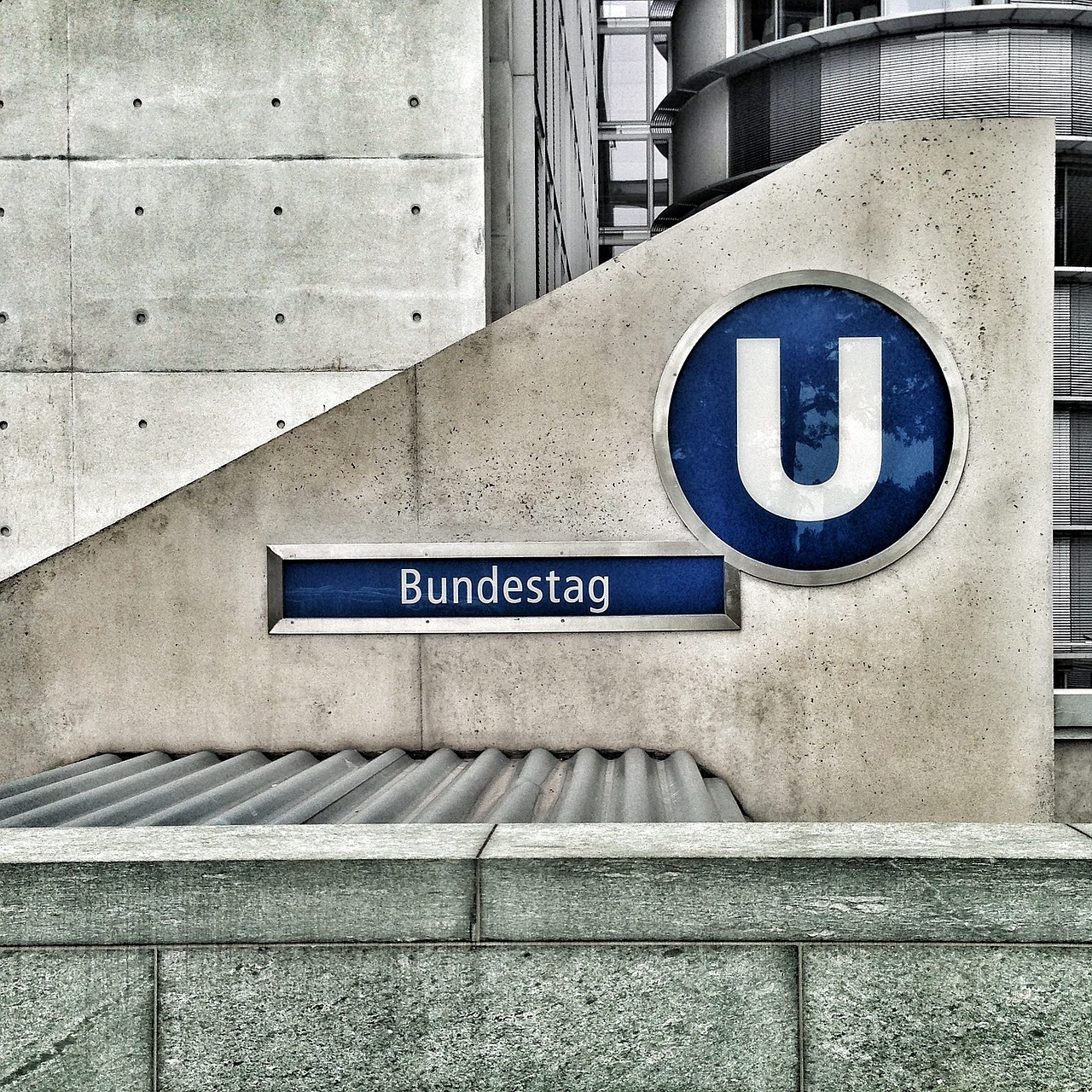
Global Regulatory Frameworks
The landscape of blockchain governance is as diverse as the countries that are embracing it. Each nation is crafting its own regulatory framework, and the approaches vary significantly. Some countries are taking a proactive stance, aiming to create an environment that fosters innovation and attracts investment, while others are more cautious, focusing on consumer protection and risk mitigation. This patchwork of regulations can create both opportunities and challenges for stakeholders in the blockchain space.
For instance, in the European Union, the Markets in Crypto-Assets (MiCA) regulation is set to provide a comprehensive framework that aims to regulate various aspects of crypto-assets while promoting innovation. This regulatory clarity is expected to enhance investor confidence and spur growth in the sector. Conversely, countries like China have adopted a more restrictive approach, banning cryptocurrency transactions altogether, which has led to significant shifts in where blockchain innovation is concentrated.
To illustrate the differences in regulatory approaches, consider the following table:
| Country | Regulatory Approach | Impact on Blockchain Innovation |
|---|---|---|
| United States | Mixed; state-level regulations vary | Encourages innovation but creates uncertainty |
| European Union | Comprehensive; MiCA regulation | Promotes growth and investor confidence |
| China | Restrictive; bans on crypto transactions | Discourages innovation, shifts focus elsewhere |
| Singapore | Supportive; clear guidelines for businesses | Attracts global blockchain firms |
As we can see, the regulatory landscape can significantly influence where blockchain projects are developed and how they operate. Countries that successfully balance innovation with security are likely to become hubs for blockchain development, attracting talent and investment from around the world. However, the challenges are real; regulations that are too stringent can stifle growth, while a lack of regulation can lead to fraud and market instability.
Moreover, the global nature of blockchain technology means that regulations in one country can have ripple effects in others. For instance, if a major economy enacts strict regulations, blockchain projects may migrate to more favorable jurisdictions, leaving the original country behind in the technological race. This global interconnectedness highlights the need for international cooperation in creating standards that can foster innovation while ensuring consumer protection.
In summary, the evolution of global regulatory frameworks will play a pivotal role in shaping the future of blockchain governance. Stakeholders must stay informed and adaptable as they navigate this complex landscape, balancing the need for compliance with the drive for innovation.
- What is the role of regulation in blockchain governance? Regulation helps ensure consumer protection, fosters trust, and provides a framework for innovation in the blockchain space.
- How do different countries approach blockchain regulation? Countries vary in their approaches, with some fostering innovation and others imposing strict restrictions.
- What are the potential impacts of regulation on blockchain innovation? Effective regulation can enhance investor confidence and promote growth, while overly stringent regulations can stifle innovation.
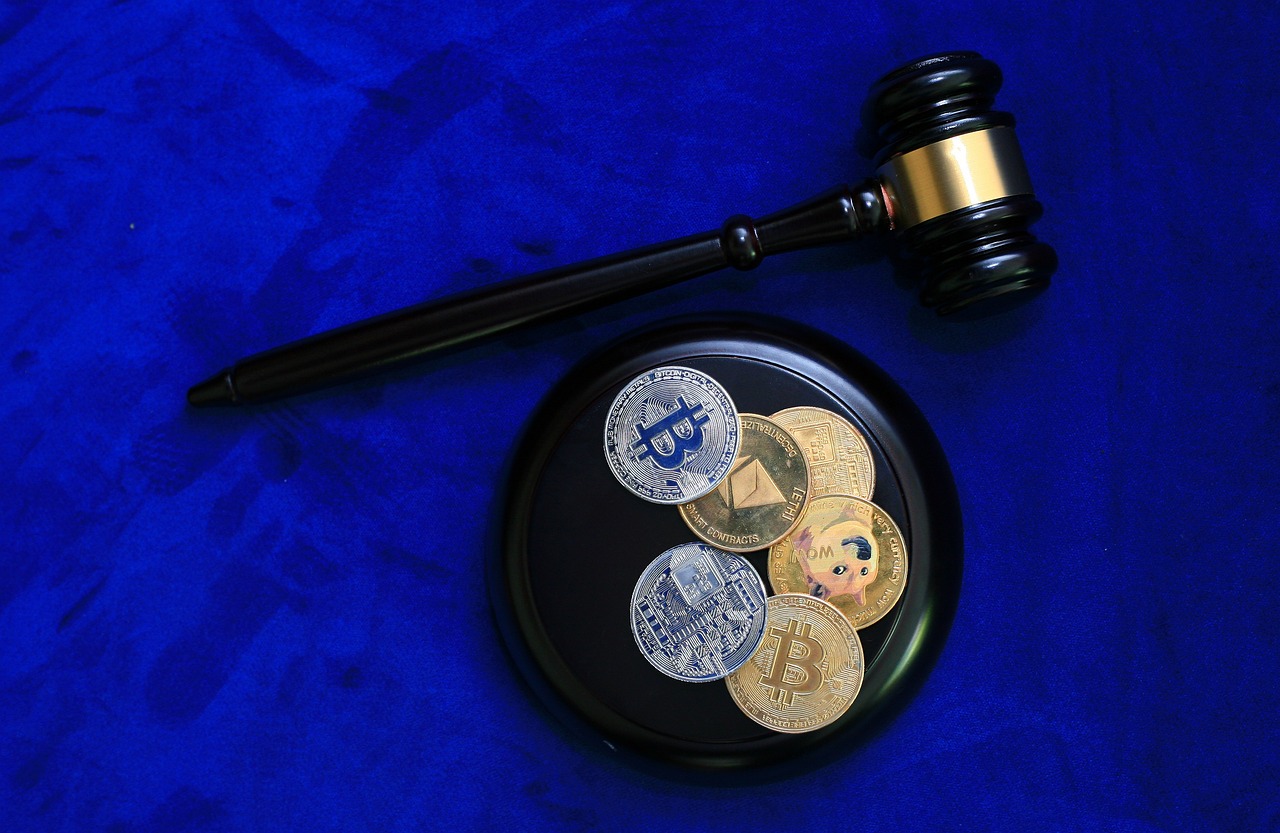
Case Studies of Successful Regulations
When we look at the landscape of blockchain governance, it's fascinating to see how various regulatory frameworks have emerged across the globe, each with its unique approach to fostering innovation while ensuring consumer protection. One standout example is Switzerland, which has established itself as a pioneer in blockchain regulations. The Swiss Financial Market Supervisory Authority (FINMA) has created a clear set of guidelines that allow blockchain startups to operate within a structured legal framework. This clarity not only attracts investment but also instills confidence among consumers and businesses alike.
Another noteworthy case is Singapore, where the Monetary Authority of Singapore (MAS) has implemented a progressive regulatory environment for blockchain technology. Through its Project Ubin, MAS has explored the use of blockchain for interbank payments, demonstrating a commitment to innovation while addressing regulatory concerns. The collaborative approach taken by the MAS has encouraged both local and international companies to engage with the Singaporean market, thus positioning the country as a hub for blockchain development.
Moreover, the European Union is also making strides with its MiCA (Markets in Crypto-Assets) regulation, which aims to create a comprehensive regulatory framework for cryptocurrencies and blockchain projects across member states. By harmonizing regulations, the EU seeks to eliminate the fragmentation that can stifle innovation and investment. This regulatory clarity is expected to attract more blockchain projects to Europe, significantly impacting the market dynamics.
However, while these examples illustrate successful regulatory frameworks, they also highlight the importance of flexibility and adaptability in governance. Regulations must evolve alongside technology to avoid becoming outdated. For instance, the rapid growth of Decentralized Finance (DeFi) platforms poses new challenges for regulators worldwide. Recognizing this, countries like Australia have begun to explore tailored regulations that address the unique aspects of DeFi, ensuring that they can leverage its benefits without compromising on security.
To summarize, the case studies of Switzerland, Singapore, and the European Union demonstrate that effective regulation can foster innovation while protecting stakeholders. These examples provide valuable lessons for other nations looking to navigate the complexities of blockchain governance. As we move forward, it will be crucial for regulators to maintain an open dialogue with industry participants, ensuring that regulations remain relevant and supportive of technological advancements.
- What is blockchain governance? Blockchain governance refers to the mechanisms and processes that determine how decisions are made within a blockchain network, including the rules for protocol upgrades and community participation.
- Why is regulation important for blockchain? Regulation is essential for providing clarity and security, encouraging investment, and protecting consumers from potential risks associated with blockchain technologies.
- How do smart contracts enhance governance? Smart contracts automate processes and enforce agreements without intermediaries, increasing efficiency and trust among stakeholders.
- What challenges do regulators face in blockchain governance? Regulators face challenges such as keeping up with rapid technological changes, ensuring security, and balancing innovation with consumer protection.

Challenges in Regulation Implementation
Implementing effective regulations in the realm of blockchain governance is no walk in the park. In fact, it's akin to trying to catch smoke with your bare hands. The rapidly evolving nature of blockchain technology presents a unique set of challenges that regulators must navigate to ensure a balanced approach. One of the primary hurdles is the lack of clear and coherent guidelines. Without specific regulations, businesses and stakeholders often find themselves in a grey area, unsure of how to proceed. This uncertainty can stifle innovation, as companies may hesitate to invest in new technologies or business models due to fear of non-compliance.
Furthermore, the very essence of blockchain—its decentralized nature—poses a significant challenge for traditional regulatory frameworks. Regulators are used to dealing with centralized entities that can be easily monitored and held accountable. In contrast, blockchain networks operate on a peer-to-peer basis, making it difficult to identify responsible parties. This raises the question: how can regulators enforce compliance when they can't pinpoint who is in charge? This dilemma often leads to overly broad regulations that can inadvertently stifle innovation rather than promote it.
Another challenge lies in the dynamic nature of technology itself. Blockchain is not static; it evolves rapidly, often outpacing the regulatory frameworks designed to govern it. As new innovations emerge, regulators must continuously adapt their approaches. This ongoing battle between innovation and regulation can lead to a frustrating cycle where regulations are either too stringent, hindering progress, or too lax, exposing consumers to potential risks.
Moreover, the global nature of blockchain adds another layer of complexity. Different countries have varying regulatory approaches, which can create confusion for businesses operating across borders. For instance, a company that complies with regulations in one country may find itself in violation of laws in another. This inconsistency not only complicates compliance efforts but also discourages international investment and collaboration.
In summary, while the need for regulation in blockchain governance is clear, the path to effective implementation is fraught with challenges. Regulators must strike a delicate balance between fostering innovation and ensuring consumer protection. This requires a deep understanding of the technology, collaboration with industry stakeholders, and a willingness to adapt to the ever-changing landscape of blockchain. Only then can we hope to create a regulatory environment that supports growth while safeguarding the interests of all parties involved.
- What are the main challenges in implementing blockchain regulations? The main challenges include unclear guidelines, the decentralized nature of blockchain, the rapid evolution of technology, and inconsistent regulations across different countries.
- How does decentralization complicate regulation? Decentralization makes it difficult to identify responsible parties, which complicates compliance and enforcement of regulations.
- Why is adaptability important in blockchain regulation? Because blockchain technology evolves quickly, regulators must adapt their frameworks to keep pace with new innovations and practices.
- What impact do global regulatory differences have? They create confusion for businesses operating internationally, as compliance in one country may lead to violations in another.

Decentralization and Its Implications
Decentralization is not just a buzzword; it's a revolutionary principle that lies at the heart of blockchain technology. Think of it as a shift from a single conductor leading an orchestra to each musician playing their part in harmony. This transformation fundamentally alters governance structures, empowering stakeholders in ways that traditional systems simply cannot replicate. With decentralization, the power dynamics change, allowing for a more democratic form of governance where every voice counts. This is particularly significant in a world where centralized authorities often dominate decision-making processes.
One of the most striking implications of decentralization is the enhanced transparency it provides. In traditional systems, decisions are often made behind closed doors, leaving stakeholders in the dark. However, with blockchain's transparent ledger, all transactions and decisions are visible to everyone involved. This level of visibility fosters trust among participants, as they can independently verify actions taken within the network. Imagine being part of a community where every decision is transparent and accountable—this is the reality decentralization offers.
Moreover, decentralization promotes inclusivity. It breaks down barriers that previously excluded marginalized groups from participating in governance. For instance, in a decentralized network, anyone with an internet connection can contribute to discussions, vote on proposals, or even initiate changes. This democratization of power not only empowers individuals but also enriches the decision-making process by incorporating diverse perspectives. Just picture a town hall meeting where every resident has a say, regardless of their social status—this is the essence of decentralized governance.
However, while decentralization presents numerous advantages, it also comes with its own set of challenges. One major concern is the potential for disorganization. Without a central authority to guide the process, decision-making can become chaotic, leading to gridlock or ineffective outcomes. To address this, many decentralized systems are experimenting with governance models that blend both decentralized and centralized elements, creating a hybrid approach that aims to harness the benefits of both worlds.
In addition, the shift towards decentralization raises questions about accountability. In a traditional system, it's easier to pinpoint responsibility when things go wrong. In a decentralized setup, the diffusion of responsibility can lead to ambiguity. To mitigate this, communities are developing frameworks that establish clear roles and responsibilities, ensuring that accountability is maintained even in a decentralized environment.
In conclusion, decentralization is a powerful force reshaping governance as we know it. It enhances transparency, promotes inclusivity, and challenges traditional power dynamics. However, as with any significant shift, it brings challenges that need to be addressed. The future of governance may very well depend on how effectively we can embrace the principles of decentralization while mitigating its drawbacks. As we move forward, it will be fascinating to see how these changes unfold and what new models of governance emerge from this exciting landscape.
- What is decentralization in blockchain? Decentralization refers to the distribution of authority and decision-making across a network, rather than being concentrated in a single entity.
- How does decentralization enhance transparency? By using a public ledger, all transactions and governance decisions are visible to all participants, fostering trust and accountability.
- What are the challenges of decentralized governance? Challenges include potential disorganization, ambiguity in accountability, and the need for effective decision-making frameworks.
- Can decentralization coexist with centralized elements? Yes, many systems are exploring hybrid models that combine decentralized and centralized governance to balance efficiency and inclusivity.
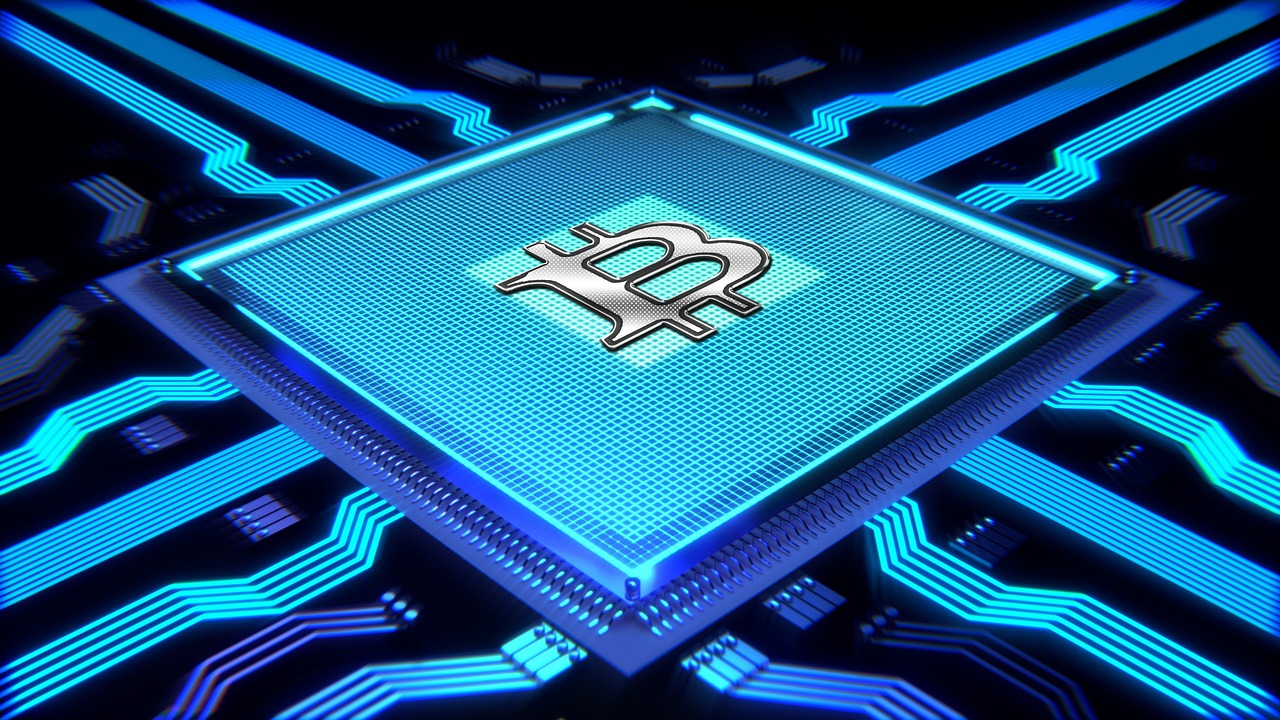
Technological Innovations Shaping Governance
The landscape of governance is undergoing a seismic shift, thanks in large part to technological innovations that are redefining how decisions are made and executed. At the forefront of this transformation are two groundbreaking technologies: smart contracts and Decentralized Autonomous Organizations (DAOs). These innovations are not just buzzwords; they represent a new era of governance that is more efficient, transparent, and participatory. Imagine a world where agreements are executed automatically without the need for a middleman. That's the promise of smart contracts.
Smart contracts are self-executing contracts with the terms directly written into code. They operate on blockchain technology, which ensures that once conditions are met, the contract executes automatically. This reduces the need for intermediaries, which can often slow down processes and introduce points of failure. For instance, in traditional governance, a contract might require a lawyer to interpret terms and enforce compliance. With smart contracts, the code itself serves as the enforcer, leading to faster execution and reduced costs. The implications for governance are profound—think about how this could streamline processes in sectors like real estate, finance, and even voting systems.
On the other hand, DAOs are revolutionizing the way communities govern themselves. They empower members to make decisions collectively, allowing for a more democratic and transparent process. In a DAO, every member typically has a voice, and decisions are made based on consensus rather than a top-down approach. This is akin to a digital town hall where every participant has an equal say—imagine the power of community-driven governance! DAOs can manage resources, set agendas, and even fund projects based on the collective will of their members, all without a centralized authority. This not only fosters a sense of ownership but also encourages participation, which is often lacking in traditional governance structures.
However, while these technologies present exciting opportunities, they also bring challenges. For example, the code that governs smart contracts must be flawless; any bugs or vulnerabilities can lead to catastrophic failures. Similarly, DAOs face issues such as governance token distribution and decision-making processes that may become contentious. It's crucial to address these challenges to fully harness the potential of these innovations.
| Technology | Description | Impact on Governance |
|---|---|---|
| Smart Contracts | Self-executing contracts with terms written in code | Reduces need for intermediaries, speeds up processes |
| DAOs | Organizations governed by smart contracts allowing collective decision-making | Empowers communities, fosters transparency and participation |
As we move forward, it's clear that these technological innovations are not just shaping governance—they're reshaping the very fabric of how we think about authority and decision-making. The future of governance may well depend on our ability to adapt to these changes while addressing the inherent challenges they present. Are we ready to embrace this new paradigm? The answer to that question will determine the trajectory of governance in the blockchain era.
- What are smart contracts?
Smart contracts are self-executing contracts with the terms of the agreement directly written into code, allowing for automatic execution once conditions are met. - What is a DAO?
A Decentralized Autonomous Organization (DAO) is a digital organization governed by smart contracts, enabling collective decision-making without centralized control. - How can smart contracts improve governance?
They can reduce the need for intermediaries, increase efficiency, and enhance trust among stakeholders by automating the enforcement of agreements. - What challenges do DAOs face?
DAOs may encounter issues related to governance token distribution and decision-making processes, which can lead to disputes among members.
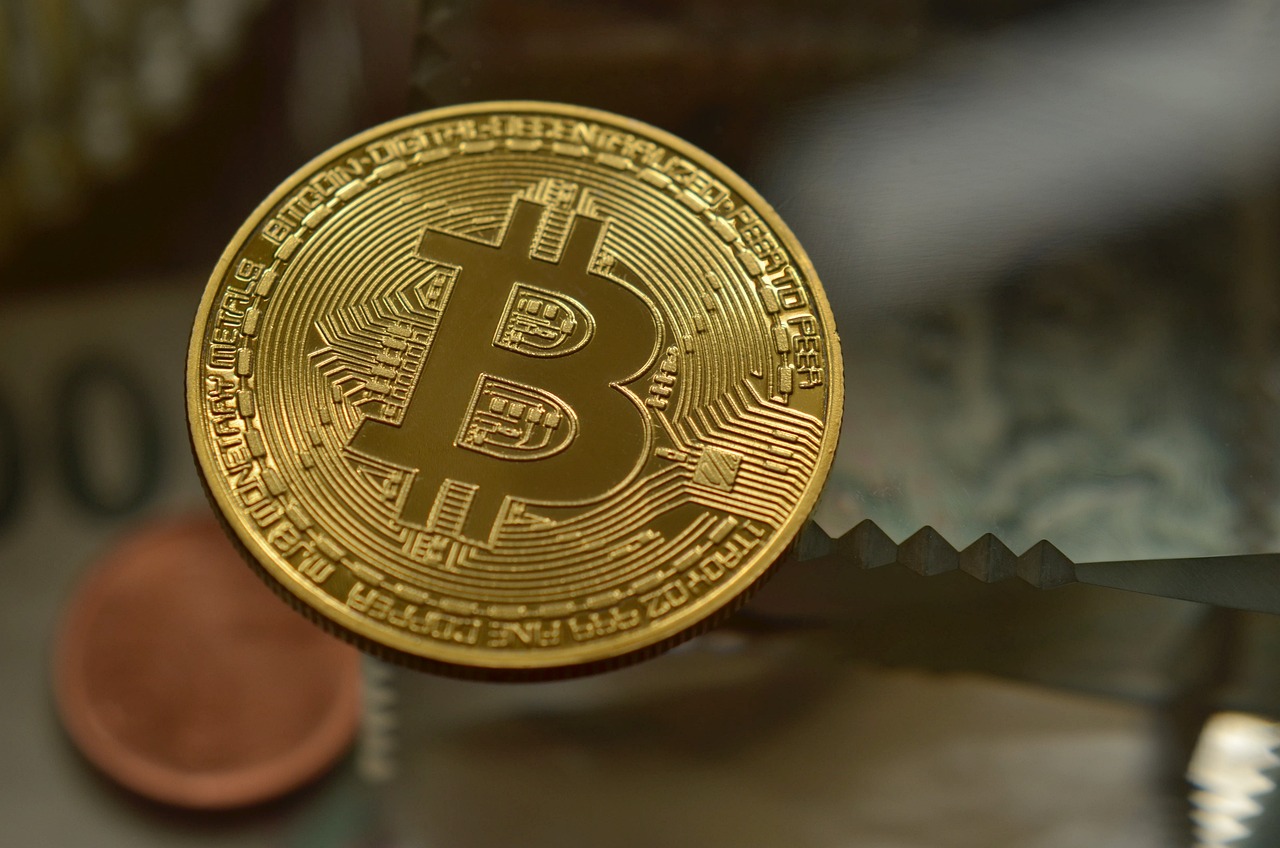
Smart Contracts in Governance
Smart contracts are revolutionizing the way governance is conducted across various sectors. Imagine a world where agreements are executed automatically, without the need for intermediaries. That’s precisely what smart contracts offer—self-executing contracts with the terms of the agreement directly written into code. This technology enhances trust among stakeholders, as it eliminates the ambiguity often associated with traditional contracts. By automating processes, smart contracts not only speed up decision-making but also significantly reduce costs associated with contract enforcement.
One of the most compelling aspects of smart contracts is their ability to create transparency. Since the contract code is stored on a blockchain, all parties involved can access it, ensuring that everyone is on the same page. This level of transparency minimizes disputes and fosters a collaborative atmosphere. For instance, in a governance model where multiple parties need to agree on funding allocation, a smart contract can automatically distribute funds once predefined conditions are met. This feature is particularly beneficial in environments where trust is a scarce commodity.
Moreover, smart contracts can significantly enhance compliance and accountability. With their programmable nature, these contracts can be designed to automatically check for compliance with regulations. For example, in a decentralized finance (DeFi) project, a smart contract can ensure that all transactions adhere to local laws before they are executed. This reduces the risk of non-compliance, which can lead to hefty fines and reputational damage.
However, while the benefits of smart contracts are numerous, they are not without challenges. One significant concern is the potential for coding errors. A small mistake in the code can lead to unintended consequences, such as the loss of funds or breach of contract terms. Therefore, rigorous testing and auditing of smart contracts are crucial before deployment. Additionally, the legal status of smart contracts remains a gray area in many jurisdictions, raising questions about enforceability and dispute resolution.
In conclusion, smart contracts are poised to change the landscape of governance dramatically. By automating processes, enhancing transparency, and ensuring compliance, they empower stakeholders and streamline operations. As we continue to explore their potential, it’s essential to address the challenges they present to fully harness their capabilities.
- What are smart contracts? Smart contracts are self-executing contracts with the terms directly written into code, stored on a blockchain.
- How do smart contracts enhance transparency? Since the code is on a blockchain, all parties can access it, ensuring everyone is aware of the terms and conditions.
- What are the risks associated with smart contracts? Risks include coding errors, legal ambiguity, and potential vulnerabilities that could be exploited.
- Can smart contracts be used in any industry? Yes, smart contracts can be applied in various sectors, including finance, supply chain, and real estate, among others.
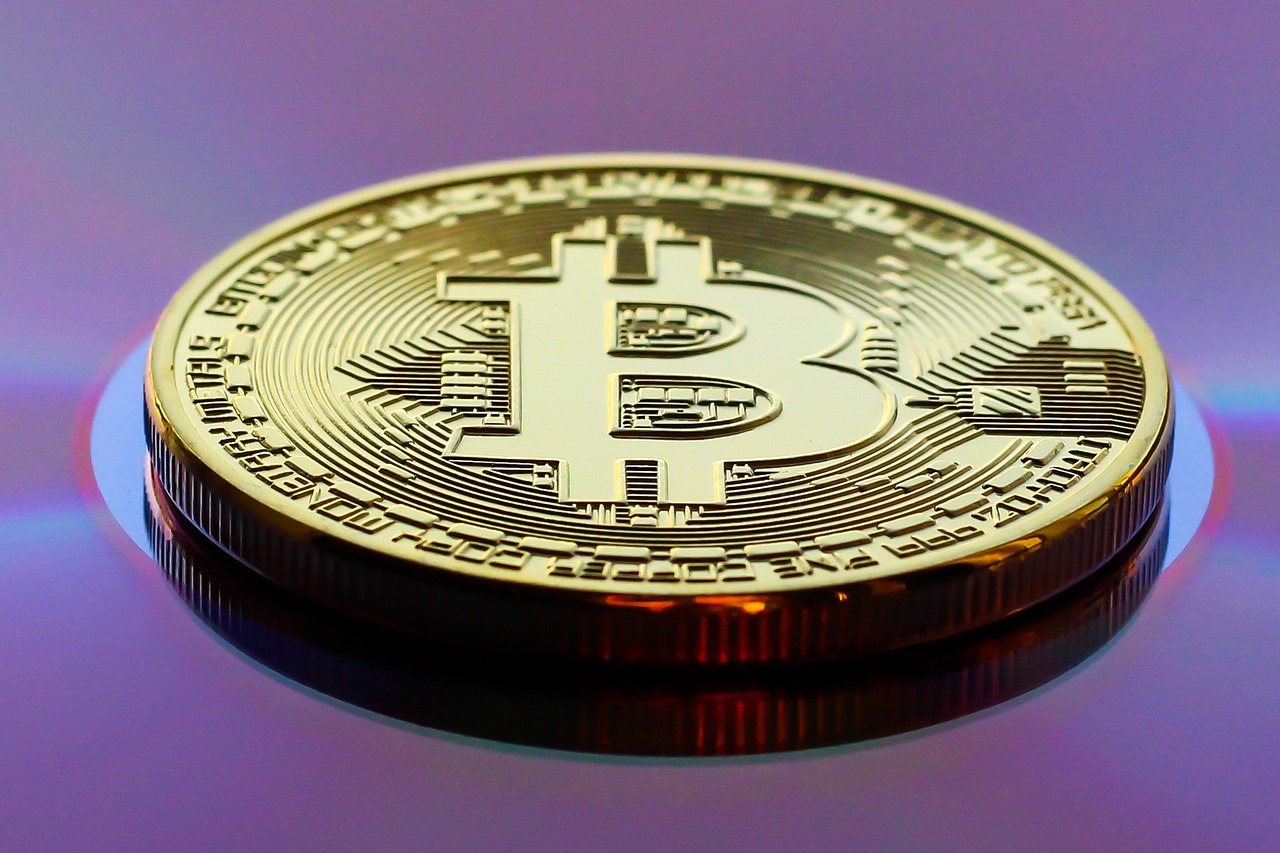
DAOs and Community Governance
Decentralized Autonomous Organizations, or DAOs, represent a revolutionary shift in how communities can govern themselves. Imagine a world where decisions are made collectively, without a central authority pulling the strings—this is the essence of DAOs. They empower individuals to come together, pooling their resources and ideas to create a governance model that reflects the community's values and goals. In a traditional organization, power often resides in the hands of a few. However, DAOs flip this model on its head, fostering a culture of transparency and inclusivity.
At the heart of a DAO is its smart contract, which acts as the backbone of governance. These self-executing contracts automatically enforce rules and execute decisions based on pre-defined criteria. This means that once a proposal is voted on and approved by the community, it is implemented without the need for intermediaries. The result? A governance process that is not only efficient but also minimizes the risk of corruption and mismanagement. For example, if a community wants to allocate funds for a project, members can propose their ideas, and through a voting mechanism, the community decides which project to fund. This kind of participatory decision-making is a game-changer.
The implications of DAOs extend beyond just decision-making; they also redefine how resources are allocated. In a traditional setup, a board or a select group may decide where funds go, often influenced by personal biases or external pressures. In contrast, DAOs allow for a more democratic approach. Members can contribute to discussions, vote on proposals, and financially support initiatives that resonate with them. This creates a sense of ownership and accountability among community members.
However, while DAOs offer exciting possibilities, they are not without challenges. For instance, the effectiveness of a DAO heavily relies on active participation from its members. If only a small fraction of the community engages in the governance process, it can lead to skewed outcomes. Moreover, the technical complexities of setting up and maintaining a DAO can deter some communities from embracing this model.
In summary, DAOs are pioneering a new frontier in community governance, making it possible for individuals to band together and create a system that reflects their collective ethos. They foster transparency, inclusivity, and efficiency, but require active participation and a willingness to navigate the complexities of decentralized decision-making. As we move forward, it will be fascinating to see how DAOs evolve and influence various sectors, reshaping the way we think about governance and community engagement.
- What is a DAO? A DAO, or Decentralized Autonomous Organization, is an organization represented by rules encoded as a computer program that is transparent, controlled by organization members and not influenced by a central government.
- How do DAOs make decisions? DAOs make decisions through a voting process where community members can propose changes or initiatives, and all members can vote on them.
- What are the benefits of using a DAO? DAOs provide transparency, reduce the need for intermediaries, empower community members, and foster a sense of ownership among participants.
- What challenges do DAOs face? DAOs can struggle with low participation rates, technical complexities, and ensuring that all voices within the community are heard and valued.
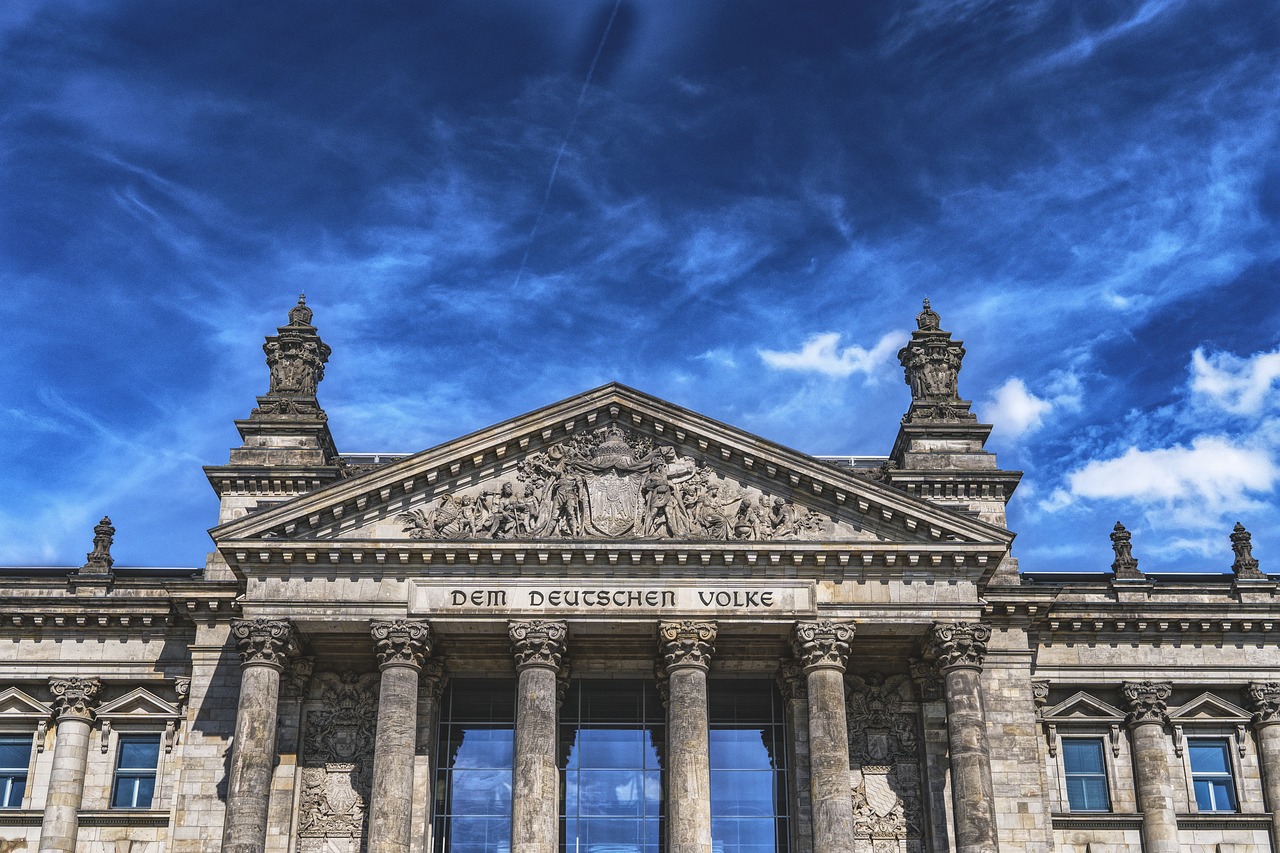
Future Challenges in Blockchain Governance
The evolution of blockchain governance is an exhilarating journey, but like any adventure, it comes with its fair share of challenges. As we look towards the future, several key issues loom large, threatening to disrupt the progress made in this dynamic field. One of the most pressing concerns is scalability. As blockchain networks continue to grow, the ability to handle an increasing number of transactions without compromising speed or efficiency becomes critical. Imagine a bustling highway during rush hour; if too many cars are on the road, traffic comes to a standstill. Similarly, if blockchain networks can't scale effectively, they risk becoming bottlenecks in governance applications.
Another significant challenge is security. With the rise of decentralized governance systems, ensuring the integrity and safety of these platforms is paramount. Vulnerabilities in smart contracts or blockchain protocols can lead to catastrophic breaches, undermining trust among users and stakeholders. Just as a castle needs strong walls to protect its inhabitants, blockchain governance systems require robust security measures to safeguard against malicious attacks. This brings us to the importance of continuous monitoring and updating of security protocols as threats evolve.
Furthermore, the balance between decentralization and regulatory compliance presents a complex dilemma. While decentralization is a fundamental principle of blockchain technology, it often clashes with existing regulatory frameworks that seek to impose control and oversight. Striking the right balance is akin to walking a tightrope; lean too far towards decentralization, and you risk chaos; lean too much towards regulation, and you stifle innovation. This tension requires innovative solutions that allow for flexibility in governance while still adhering to necessary legal standards.
In addition to these challenges, the adoption of new technologies poses its own set of hurdles. Emerging technologies such as Artificial Intelligence and the Internet of Things are beginning to intersect with blockchain governance. This convergence can lead to enhanced efficiencies but also raises questions about interoperability and the potential for unforeseen complications. As organizations begin to integrate these technologies, they must consider how to maintain seamless operations across diverse platforms.
To navigate these challenges effectively, stakeholders must engage in collaborative dialogue and develop comprehensive strategies that address these issues head-on. This means fostering relationships between technology developers, regulators, and the communities that utilize these systems. By working together, they can create a more resilient framework for blockchain governance that not only meets the needs of today but also anticipates the demands of tomorrow.
As we move forward, it’s essential to remain vigilant and proactive in addressing these challenges. The future of blockchain governance is bright, but it requires a concerted effort from all parties involved to ensure it remains a robust, secure, and innovative space. By embracing change and being adaptable, we can turn these challenges into opportunities for growth and advancement.
- What is the biggest challenge facing blockchain governance today? Scalability is currently one of the most significant challenges, as blockchain networks must handle increasing transaction volumes efficiently.
- How important is security in blockchain governance? Security is crucial; vulnerabilities can lead to breaches that undermine trust and result in financial losses.
- Can decentralization coexist with regulation? Yes, but it requires innovative solutions to balance the two without stifling innovation.
- What role do emerging technologies play in blockchain governance? They can enhance efficiencies but also introduce challenges related to interoperability and integration.

Scalability Issues
When we talk about scalability in the realm of blockchain governance, we’re diving into one of the most pressing challenges that the industry faces today. Imagine trying to fit an entire stadium of fans into a small concert hall; that’s what scalability issues feel like in the blockchain universe. As more users and applications flock to blockchain networks, the ability of these systems to handle increased loads without compromising performance becomes critical.
Currently, many blockchain networks struggle with processing a high volume of transactions quickly. This limitation can lead to delays, increased costs, and a frustrating experience for users. For instance, during peak times, Ethereum transactions can take significantly longer to confirm, leading to congestion and soaring gas fees. This scenario raises a fundamental question: how can we enhance scalability without sacrificing the core principles of decentralization and security that blockchain technology embodies?
To tackle scalability, various solutions are being explored, including layer 2 solutions, sharding, and the integration of new consensus mechanisms. Here’s a brief overview of some of these approaches:
- Layer 2 Solutions: Technologies like the Lightning Network for Bitcoin and Optimistic Rollups for Ethereum aim to process transactions off the main blockchain, alleviating congestion and improving speed.
- Sharding: This method divides the blockchain network into smaller, manageable pieces (shards) that can process transactions simultaneously, greatly enhancing throughput.
- New Consensus Mechanisms: Transitioning from proof-of-work to proof-of-stake and other innovative consensus algorithms can significantly improve transaction speeds and reduce energy consumption.
While these solutions show promise, they also introduce new complexities and considerations. For example, layer 2 solutions may rely on a degree of centralization, which could undermine the very ethos of blockchain. Sharding, while efficient, requires sophisticated coordination to ensure security across shards. Thus, the challenge lies not just in finding a scalable solution but in ensuring that it aligns with the fundamental principles of blockchain governance.
Ultimately, addressing scalability issues is not merely about improving transaction speeds; it’s about creating a robust ecosystem where blockchain can thrive. As we look to the future, the development of scalable blockchain solutions will be pivotal in fostering greater adoption across various sectors, from finance to supply chain management. The journey towards scalability is akin to building a highway system; it requires careful planning, innovative engineering, and a commitment to maintaining safety and efficiency for all users.
- What are scalability issues in blockchain? Scalability issues refer to the challenges blockchain networks face in processing a high volume of transactions quickly and efficiently, often leading to delays and increased costs.
- What solutions exist for scalability problems? Solutions include layer 2 technologies, sharding, and new consensus mechanisms aimed at improving transaction speeds and network efficiency.
- How does scalability affect blockchain adoption? Scalability is crucial for widespread adoption, as slow transaction speeds and high costs can deter users and businesses from utilizing blockchain technology.
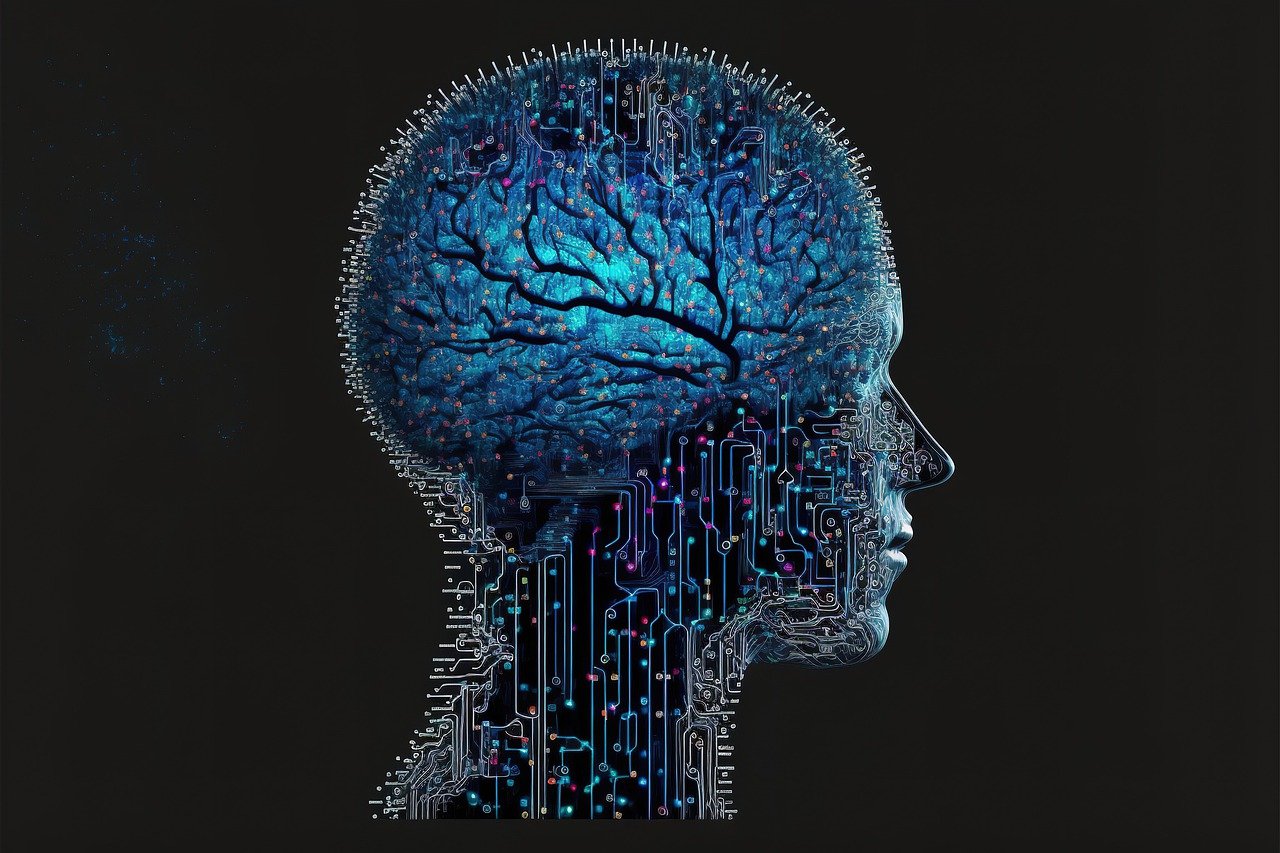
Security Concerns
When it comes to blockchain governance, security is not just a buzzword; it’s a fundamental pillar that underpins the entire ecosystem. Imagine a world where every transaction is transparent, yet vulnerable to malicious attacks. The paradox of blockchain lies in its promise of security through decentralization, while still facing significant threats that could undermine its very foundation. As we dive deeper into the realm of blockchain governance, it's crucial to address the various security concerns that stakeholders must navigate.
One of the primary issues is the potential for smart contract vulnerabilities. Smart contracts, which automate and enforce agreements, can contain bugs or loopholes that hackers exploit. In fact, there have been several high-profile incidents where poorly coded smart contracts led to the loss of millions of dollars. For instance, in 2017, the Parity wallet vulnerability allowed attackers to drain funds from various wallets due to a flaw in its smart contract code. This incident serves as a stark reminder that while blockchain can enhance security, it is not infallible.
Moreover, the risk of 51% attacks looms large, particularly for smaller blockchain networks. In a 51% attack, a group of miners or stakeholders gains control of more than half of the network's hashing power, allowing them to manipulate transactions and potentially double-spend coins. This scenario not only erodes trust in the blockchain but can also lead to significant financial losses for users. The infamous attack on the Ethereum Classic network in 2019 is an example where attackers were able to reverse transactions, highlighting the vulnerabilities that can plague decentralized systems.
Another critical aspect to consider is the security of private keys. In the blockchain world, private keys are akin to the keys to your house. If someone gains access to your private key, they can control your assets without your consent. This has led to numerous thefts and hacks, often due to users neglecting to secure their keys properly. The rise of hardware wallets and other security measures is a positive step, but the responsibility ultimately lies with the users to safeguard their digital assets.
Furthermore, as blockchain technology continues to evolve, the integration of various systems and platforms raises the stakes for security. With each new layer of complexity, the potential for vulnerabilities increases. For instance, the interoperability between different blockchains can create new attack vectors, as seen with cross-chain bridges that facilitate asset transfers. These bridges, while innovative, have been targeted in several hacks, leading to substantial losses for users.
In conclusion, while blockchain governance offers exciting possibilities for transparency and decentralization, it is imperative to remain vigilant about security concerns. Stakeholders must prioritize robust security measures, conduct thorough audits of smart contracts, and educate themselves about the risks involved. By fostering a culture of security awareness and implementing best practices, we can collectively work towards a safer blockchain environment.
- What are the main security risks associated with blockchain?
The main risks include smart contract vulnerabilities, 51% attacks, private key theft, and interoperability issues between different blockchains.
- How can I protect my assets on the blockchain?
Utilizing hardware wallets, enabling two-factor authentication, and keeping your private keys secure are essential steps to protect your assets.
- What should businesses consider regarding blockchain security?
Businesses should conduct regular audits of their smart contracts, stay updated on the latest security practices, and ensure compliance with regulatory standards.
Frequently Asked Questions
- What is blockchain governance?
Blockchain governance refers to the frameworks and processes that dictate how decisions are made within a blockchain network. It encompasses everything from rules and protocols to community engagement and stakeholder participation, ensuring that the network operates efficiently and transparently.
- How does decentralization impact governance?
Decentralization shifts power from a central authority to the community, allowing stakeholders to participate directly in decision-making. This can lead to more democratic processes, as everyone has a voice. However, it also requires robust mechanisms to manage conflicts and ensure fair representation.
- What role do regulations play in blockchain governance?
Regulations are crucial for establishing a safe and compliant environment for blockchain operations. They help protect consumers, ensure fair practices, and encourage innovation by providing clear guidelines for businesses and developers. However, overly stringent regulations can stifle growth and creativity.
- What are smart contracts and how do they relate to governance?
Smart contracts are self-executing contracts with the terms of the agreement directly written into code. They automate processes and reduce the need for intermediaries, enhancing trust and efficiency in governance. This technology can streamline decision-making and ensure compliance with agreed-upon rules.
- What challenges does blockchain governance face?
Blockchain governance faces several challenges, including scalability issues, security concerns, and the need to balance decentralization with regulatory compliance. As the technology evolves, addressing these challenges will be crucial for its widespread adoption and effectiveness.
- How can DAOs enhance community governance?
Decentralized Autonomous Organizations (DAOs) enable communities to self-govern by allowing members to collectively make decisions and allocate resources. This model fosters inclusivity and transparency, empowering individuals to take an active role in shaping their governance structures.
- What are the potential future trends in blockchain governance?
Future trends may include increased integration of AI and machine learning in governance processes, more sophisticated regulatory frameworks that balance innovation with security, and a growing emphasis on community-driven initiatives that prioritize stakeholder engagement and transparency.











